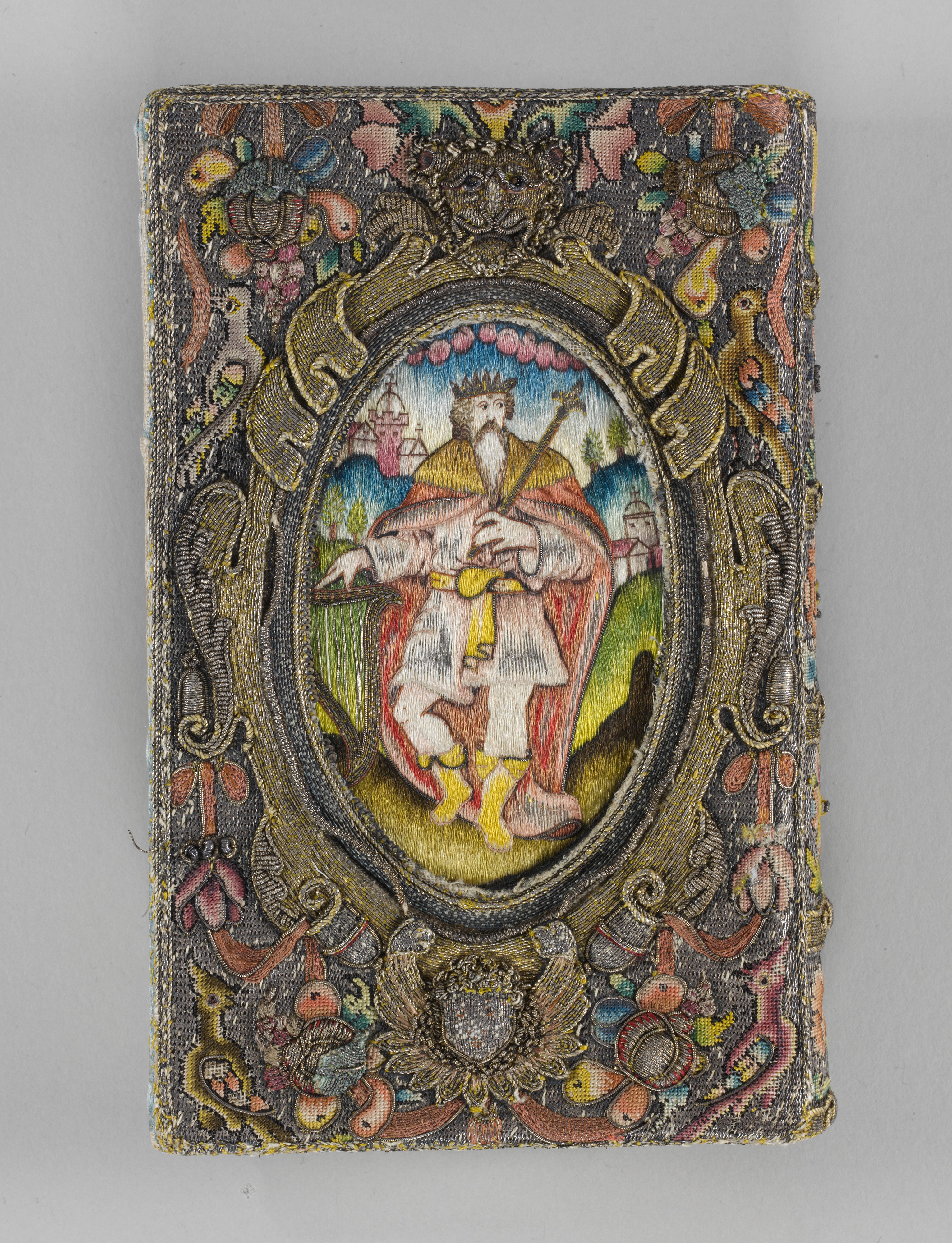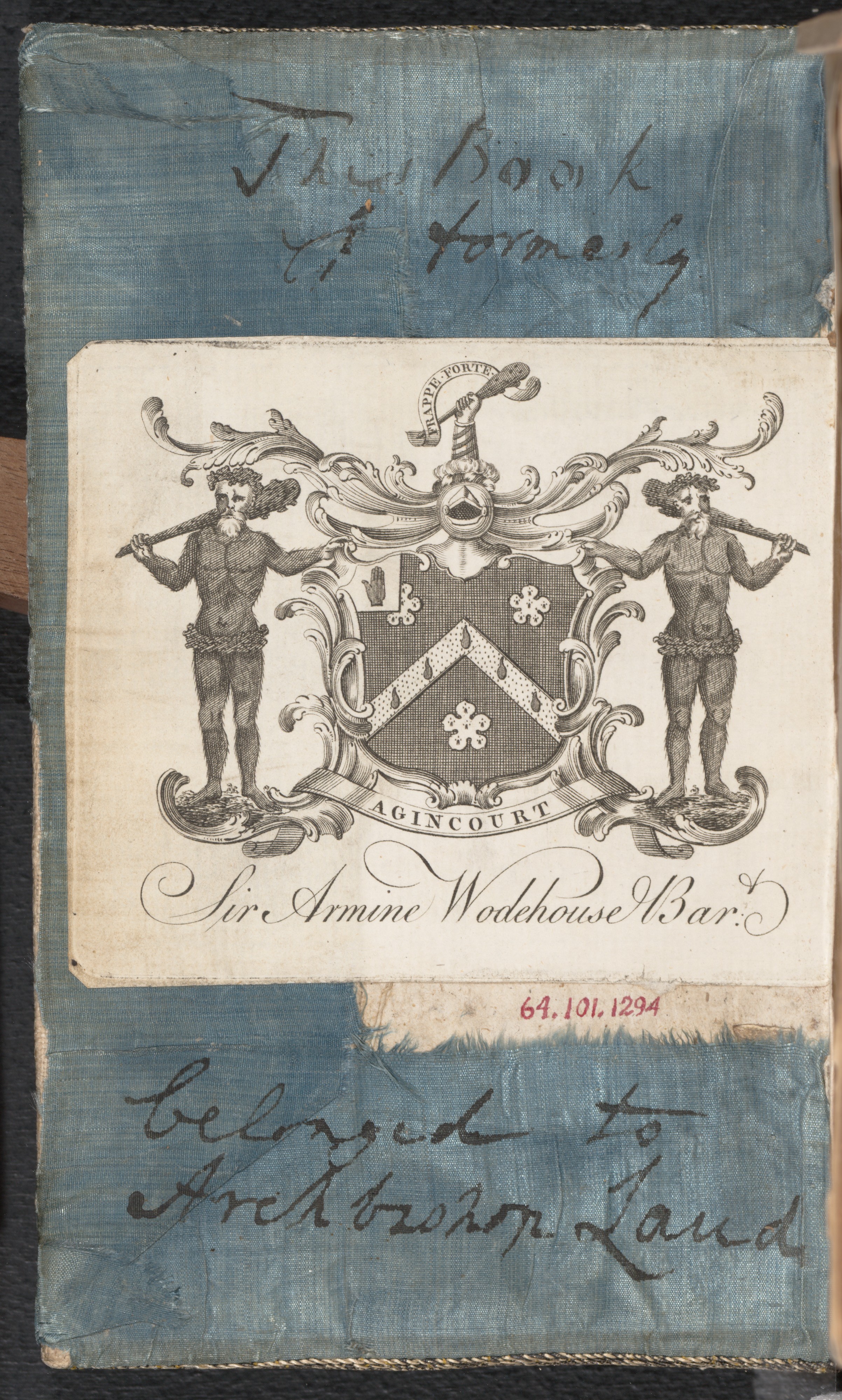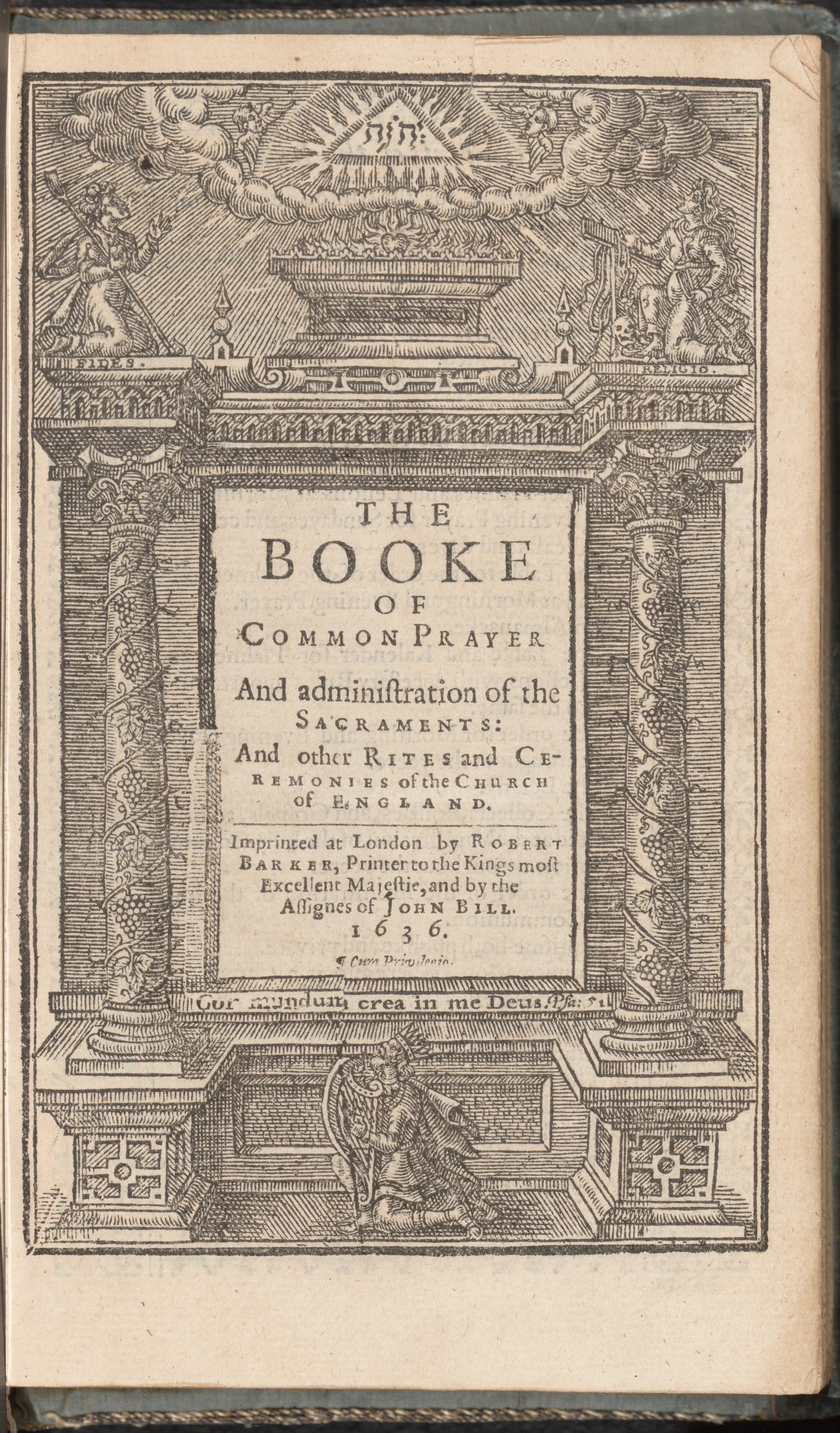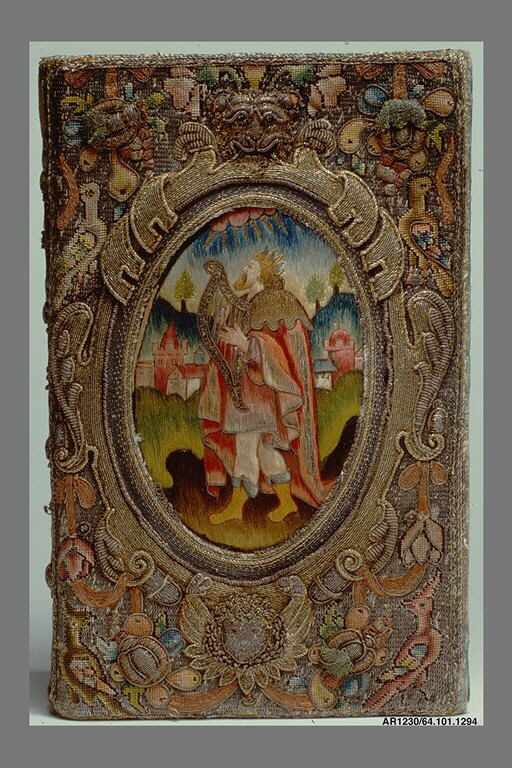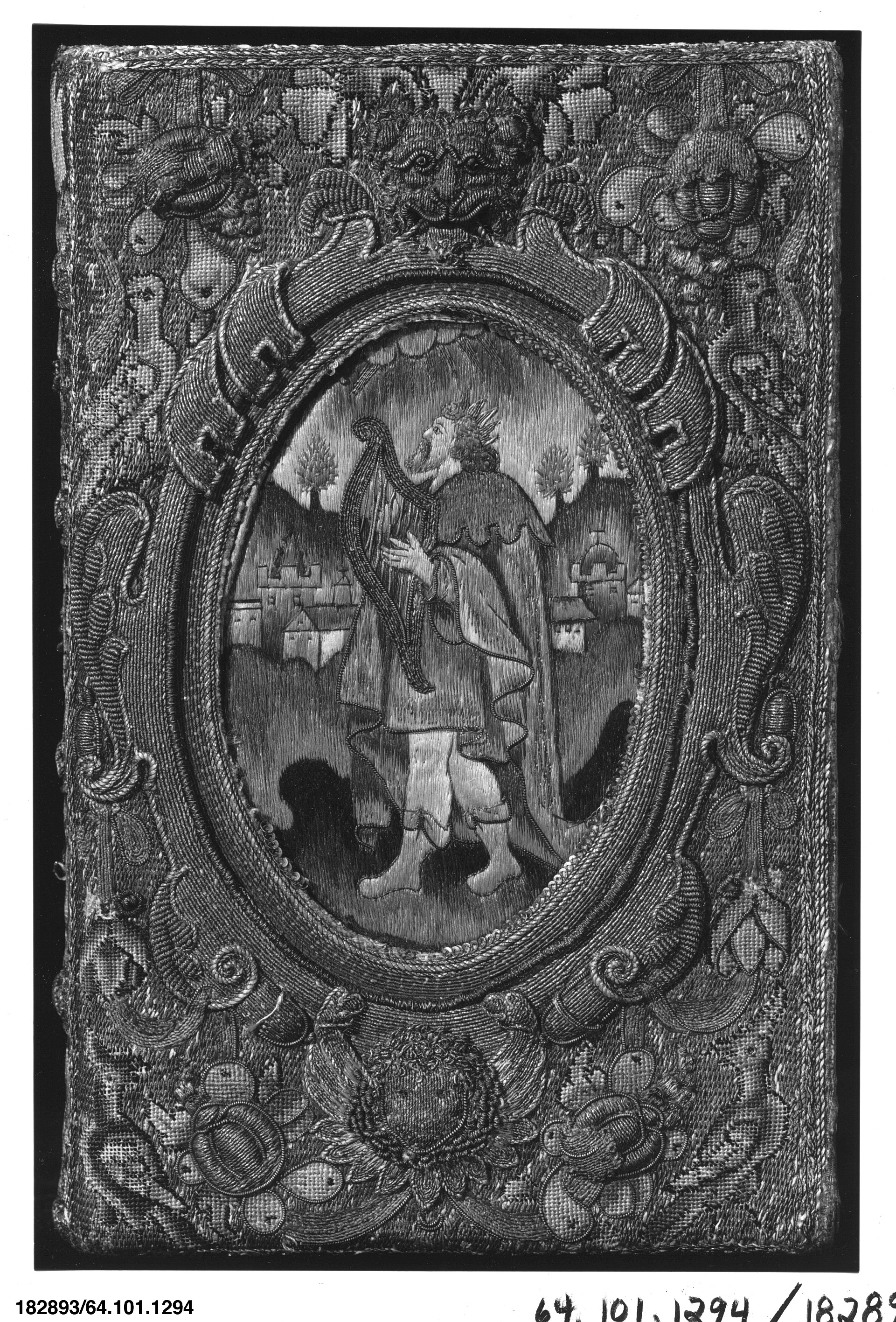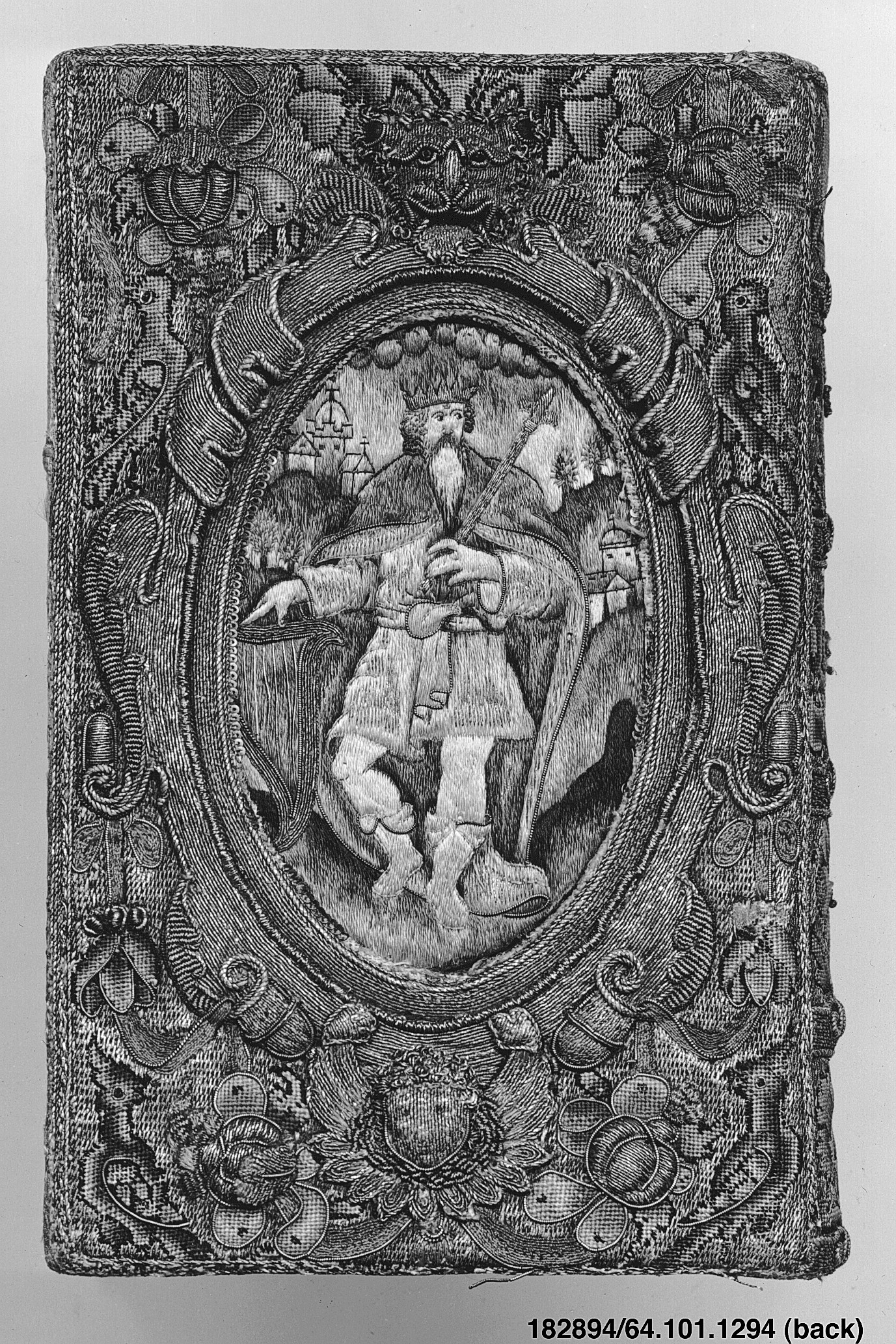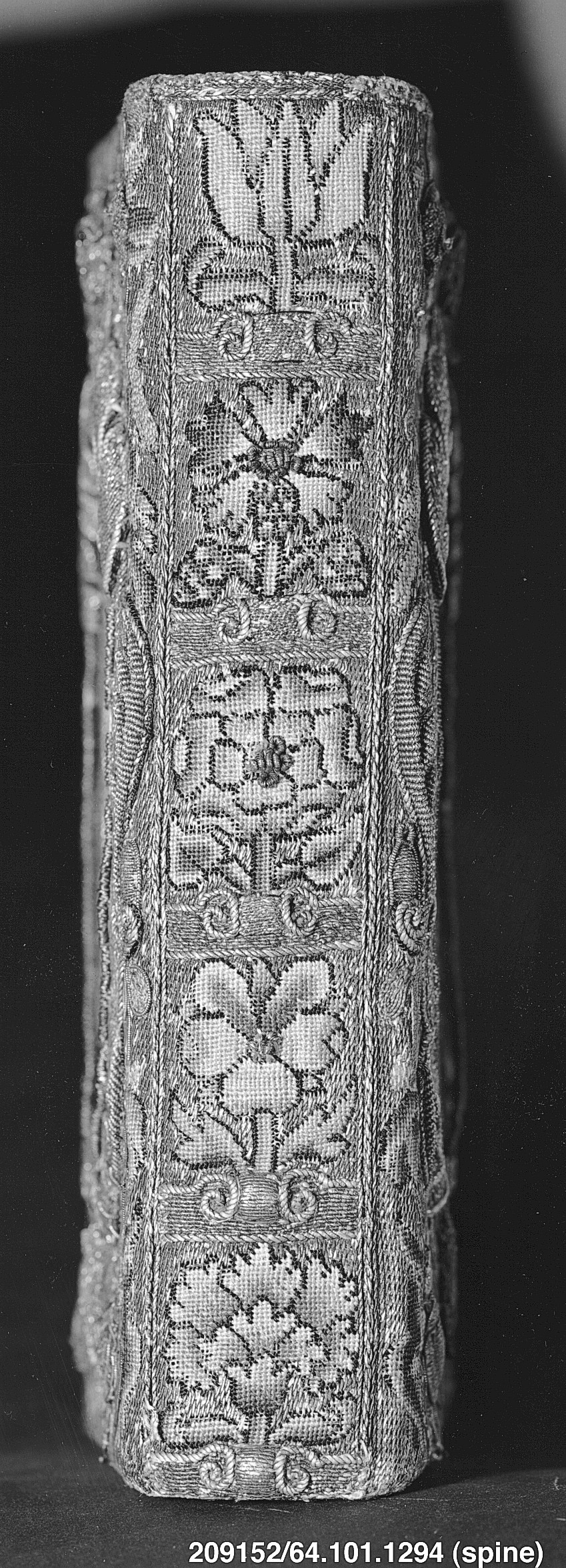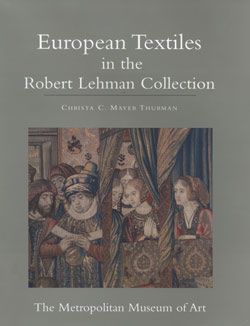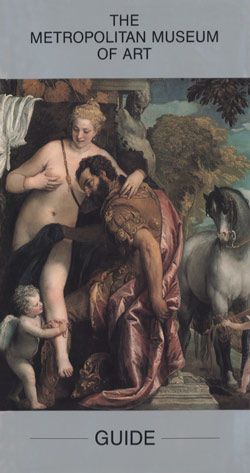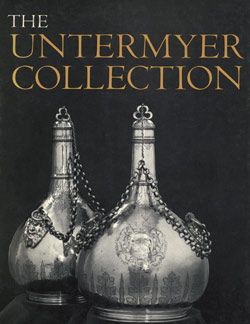The New Testament, The Book of Common Prayer
The Book of Common Prayer printed by Robert Barker
Printed by Richard Whittaker British
Not on view
Both front and back covers of this richly decorated Bible have images of King David, made in vibrant long-and-short stitch within highly ornate raised cartouches embroidered in metal thread. The front cover shows King David in profile playing his lyre, illuminated by divine rays emanating from above. Yvonne Hackenbroch noted that this standing King David derived from a figure of David on the title page of a Bible published in Cambridge in 1629. Hackenbroch also found the source for the pose of the King David on the back cover, where he is posed facing outward and holding a scepter and lyre: the title page of the third volume of Gerard de Jode’s Thesaurus Novi Testamenti (Antwerp, 1585). The spine of this Bible has five registers, each with a tent-stitch flower typical of this period. The flowers from top to bottom are: tulip, cornflower, rose, pansy, and carnation/pink. The needle-worked binding contains three liturgical texts: the New Testament (in Greek), the Book of Common Prayer, and the Book of Psalms (with musical accompaniment). The image of King David, the supposed author of the Psalms, shown here illuminated by divine rays, was an appropriate and conventional image often used to adorn books of Psalms and other liturgical works; numerous examples survive, both professional and amateur. The British Library has several, including one nearly identical in style to the Metropolitan Museum’s copy. It, too, has been made with the sumptuous materials and high-quality craftsmanship of the professional embroiderer. It has the same raised cartouches with masks on both front and back covers but with different images from the life of David within each surround.
The Museum’s Bible is said to have belonged to William Laud (1573–1645), who became Archbishop of Canterbury in 1633 and was one of Charles I’s chief ministers. This determination is based on an old (though not contemporary) inscription written in ink on the blue silk on the inside front cover: "This book formerly belonged to Archbishop Laud." If this is the case, then the book and its richly worked cover assume a powerful symbolic status. Laud was a pivotal and highly divisive figure in early seventeenth-century English religious and political life, primarily because of his attempts to reform the liturgy and to impose on the English church a richly ceremonial form of worship. This stemmed from a particular view of the divine presence within the physical structure of the church itself. The church was, as the Laudian Robert Skinner proclaimed in 1634 in a sermon before the king, the place where "our Lord God most holy doth inhabit." It was "his proper mansion or dwelling place." Such a notion of divine presence thus infused all objects used in worship with a spiritual aura. For the Laudian Alexander Read in 1636, all such objects were to be held as "holy in relation to the holy use whereto it is assigned." Even the cloth bags used to carry the communion bread into the church were special, "since the very bringing of it into the church to that use is a taking out of the world, a promotion of it to more reverence and a next step to consecration itself." This attitude promoted the value of beauty in ecclesiastical ornament and decoration. As the anonymous R.T. wrote in 1638, a church should properly contain "all kinds of ornaments that might add glory and grace . . . as curious paintings, hangings, gilding, sumptuous vestments, rich gifts of money, chalices, plate." Within its original context, therefore, the Metropolitan Museum’s richly adorned Bible would have seemed, as Lake put it, to "glow with the beauty of holiness." The sense of beauty in reverence extended also to ceremonial and ritual aspects of the liturgy, the rubrics for which were contained within the Book of Common Prayer. Strict adherence to the order of the liturgy was regarded as the surest means of true communion with God and indeed constituted for Laud the only legitimate form of prayer. Whether or not the Metropolitan Bible actually belonged to Laud, it nonetheless embodies the Laudian style, both in the text itself—the Book of Common Prayer, which, containing the whole liturgy, stood at the center of Laudian worship—and in the extravagant richness of its decoration, which infuses it with "the beauty of holiness."
A sincere Protestant, Laud wished to reinstate such practices and objects into the Church of England, which he regarded as historically and theologically accurate and which predated the corruption of the Church of Rome. As the highest prelate in the land, he sought to impose practices such as bowing to the altar (which replaced the communal "Lord’s table"), the use of incense in the performance of liturgical prayers, and the use of rich vestments in the exercise of the liturgy. Such actions, as well as his resistance to the Puritan emphasis on bibliocentric piety and preaching, alienated both hardline and moderate Puritans. The introduction of what were widely considered Catholic or popish customs provoked significant opposition. The rebellion in Scotland in July 1637—a reaction to the institution of a new form of liturgy modeled on the English Book of Common Prayer—was what forced Charles I to recall Parliament, which in turn set off a series of events leading to the Civil Wars and Laud’s own eventual execution at the hands of Parliament in 1645.
This image cannot be enlarged, viewed at full screen, or downloaded.
This artwork is meant to be viewed from right to left. Scroll left to view more.


